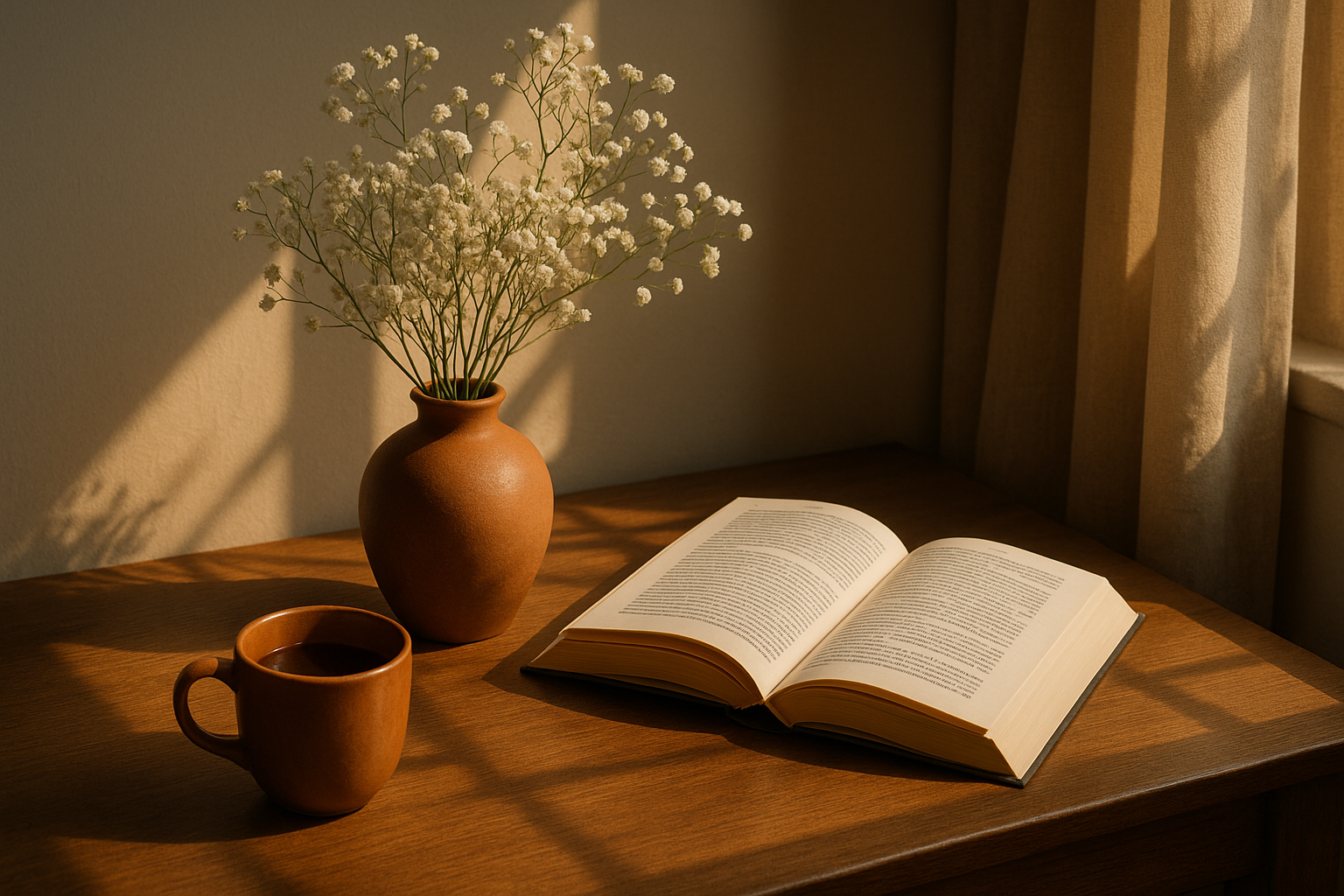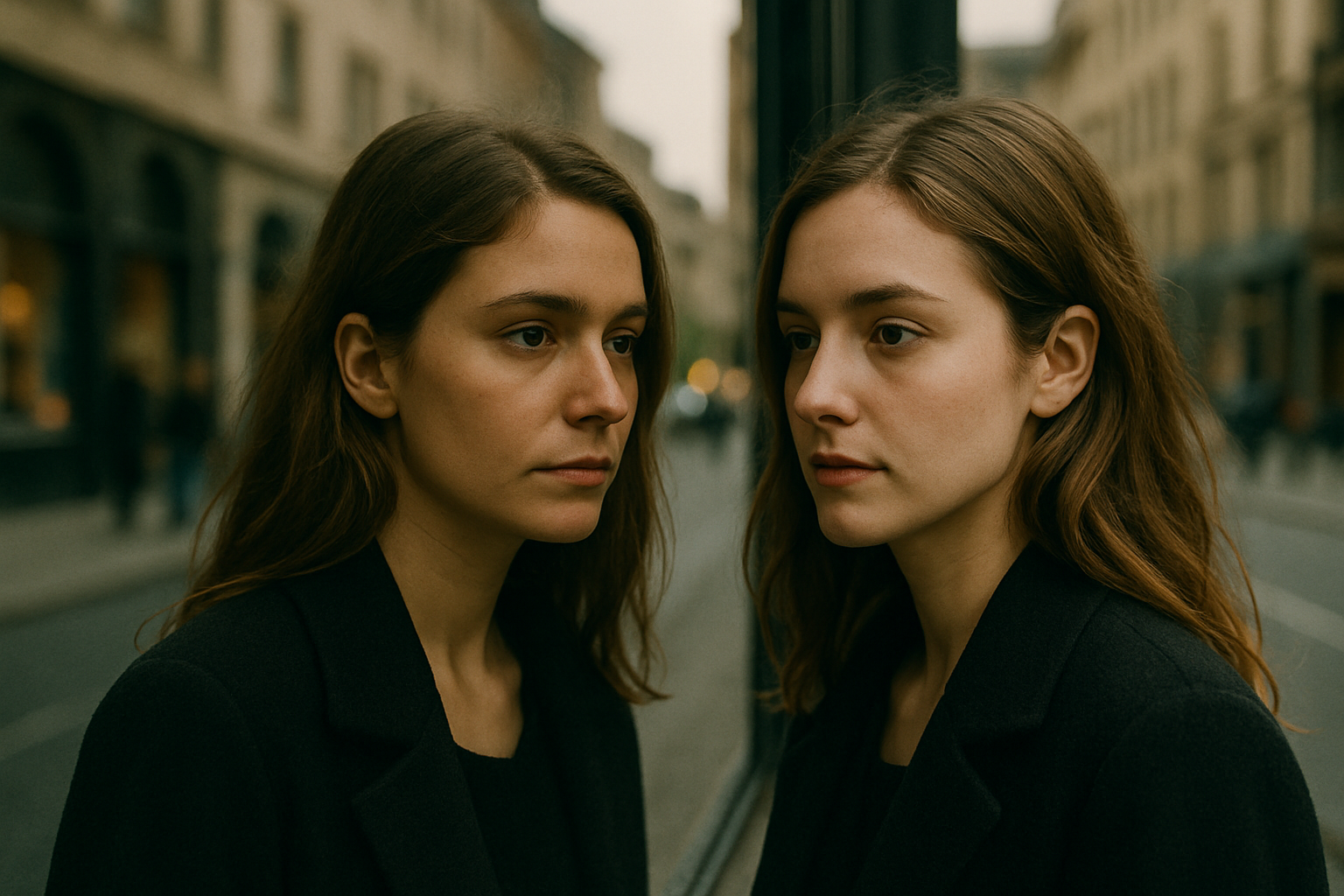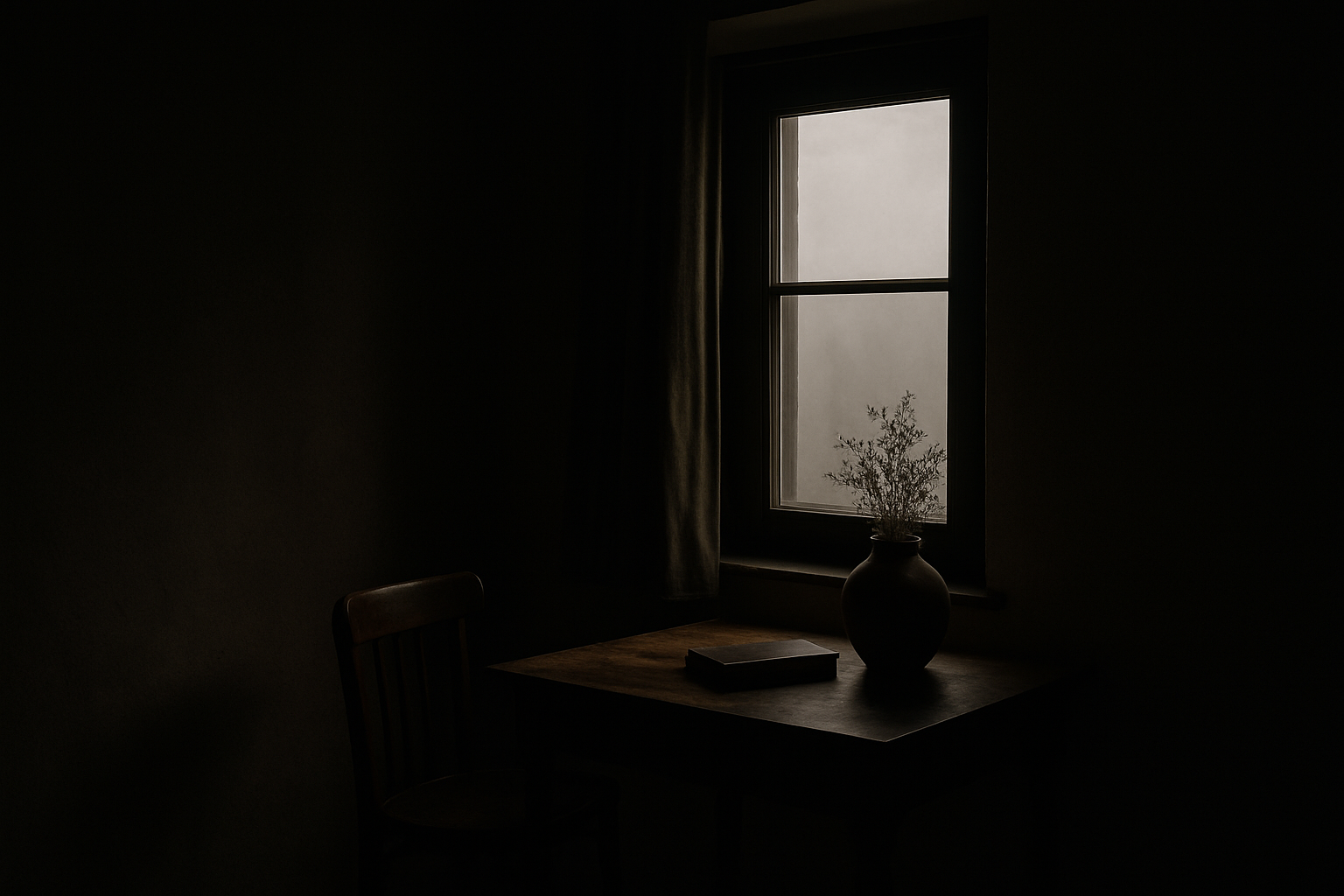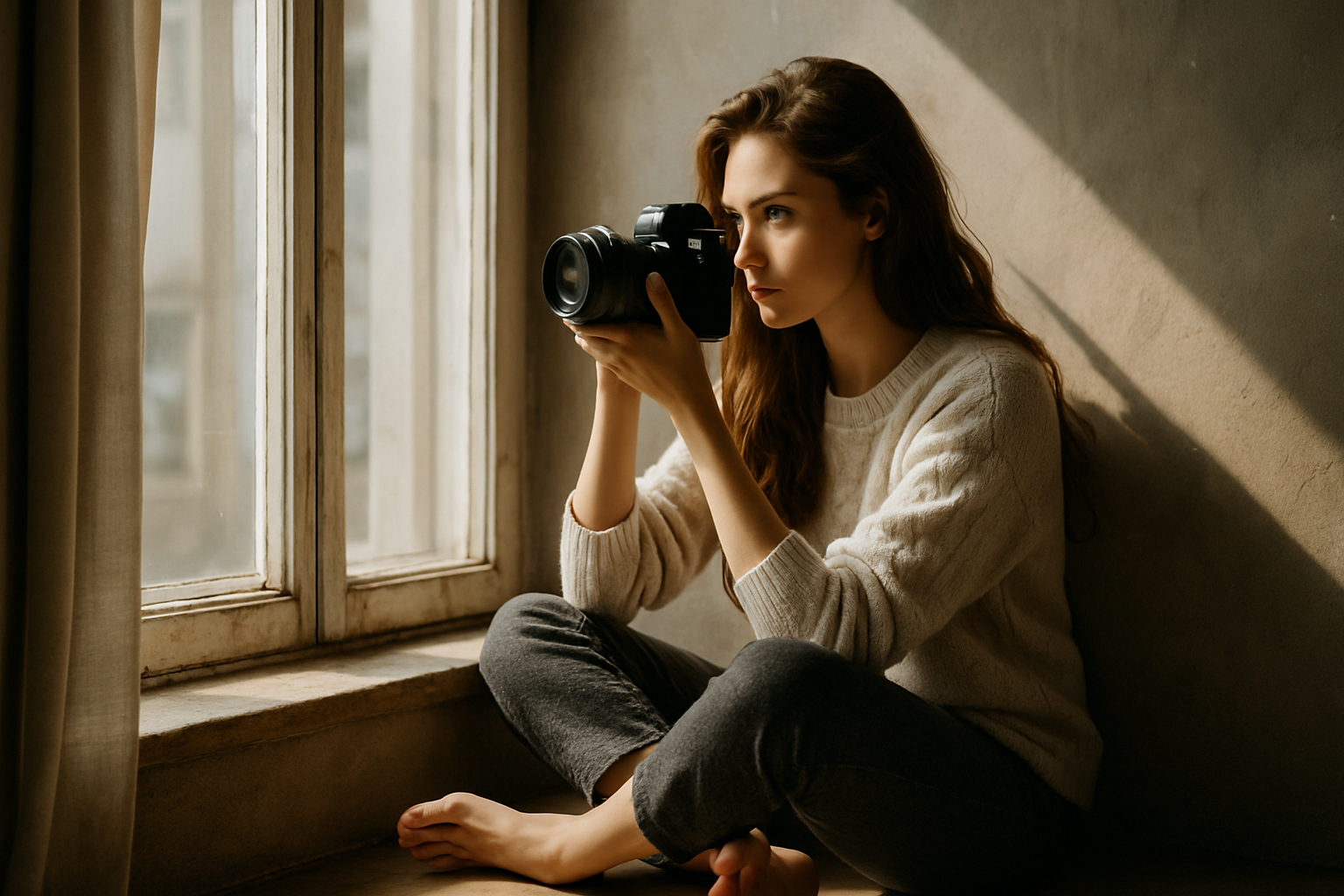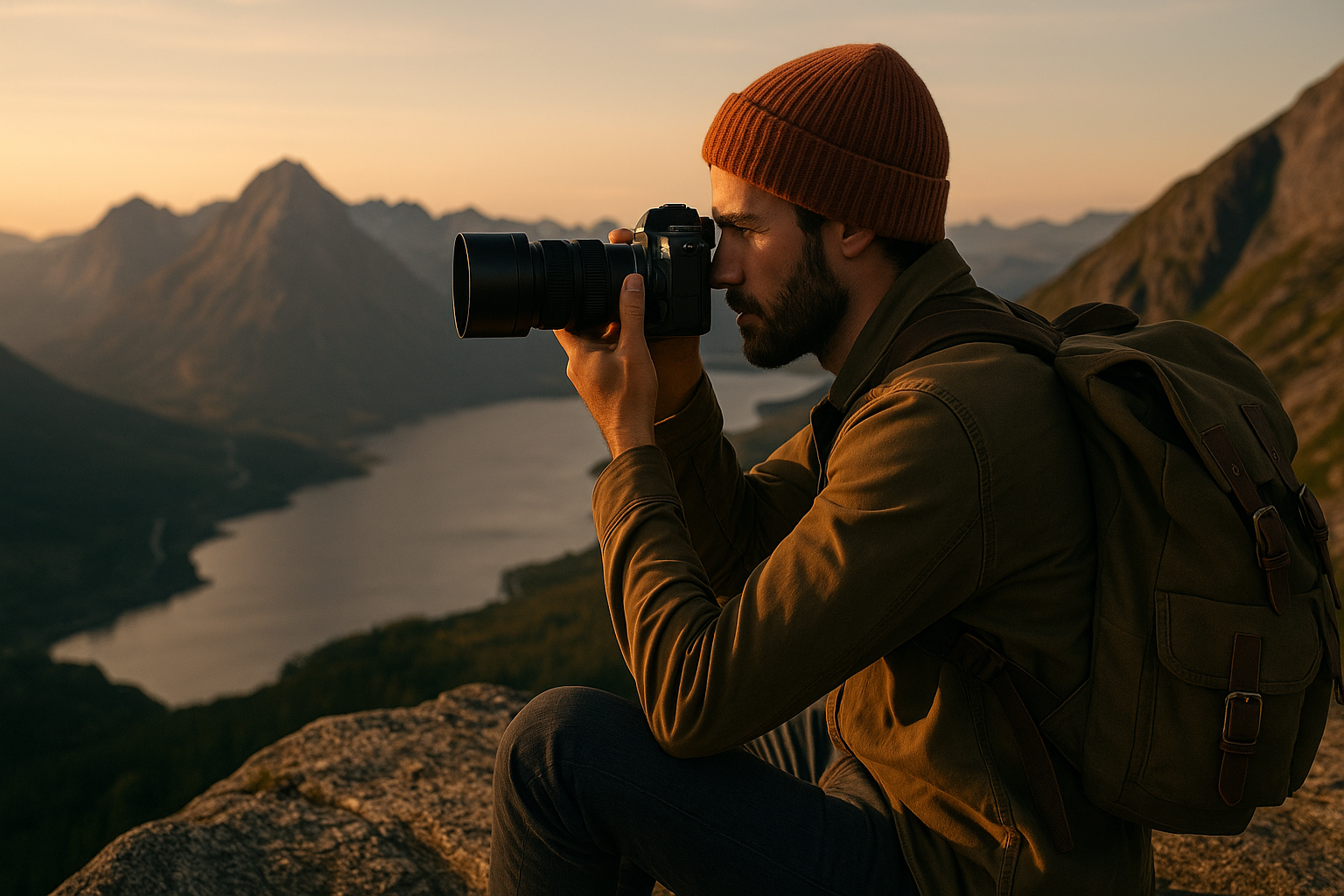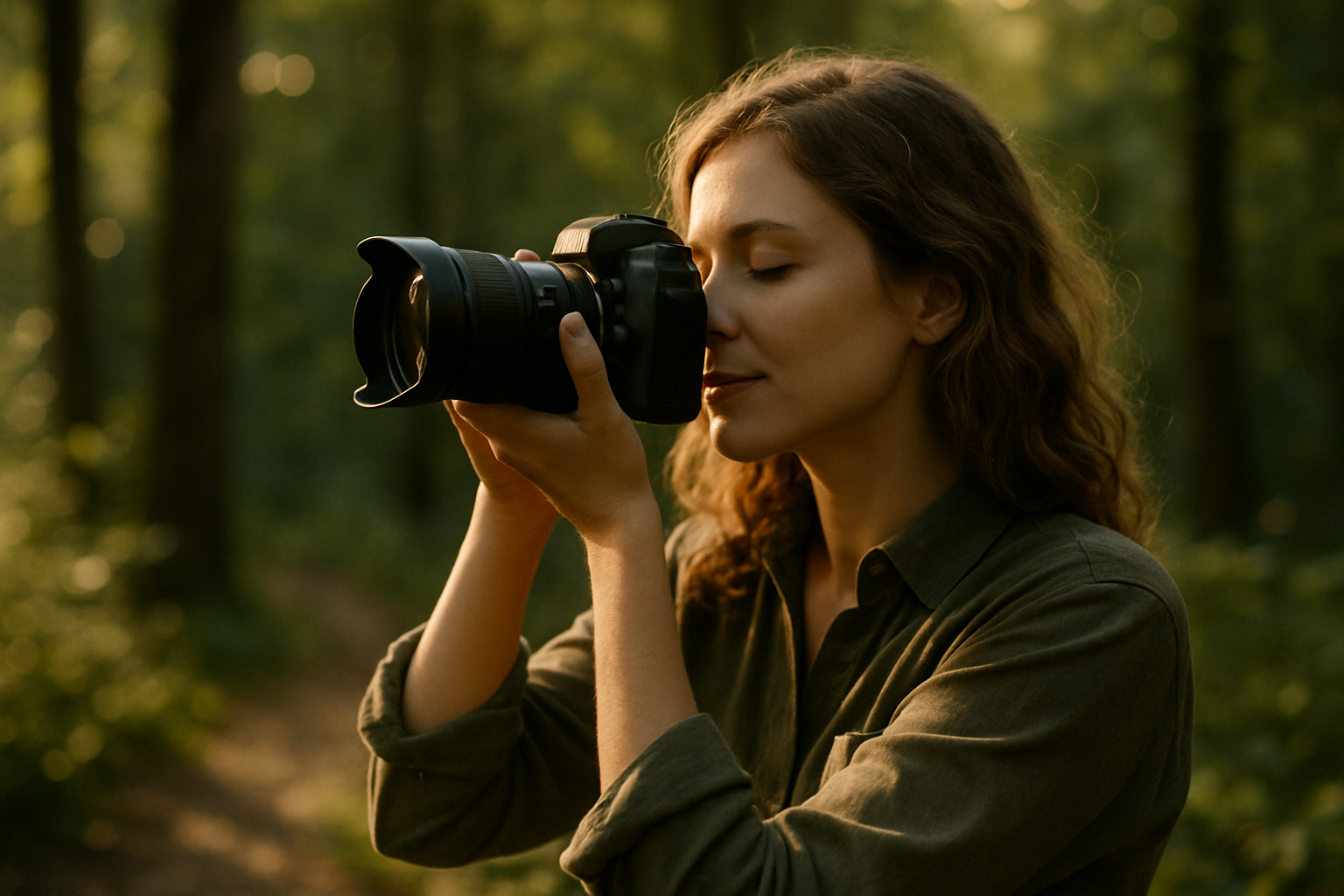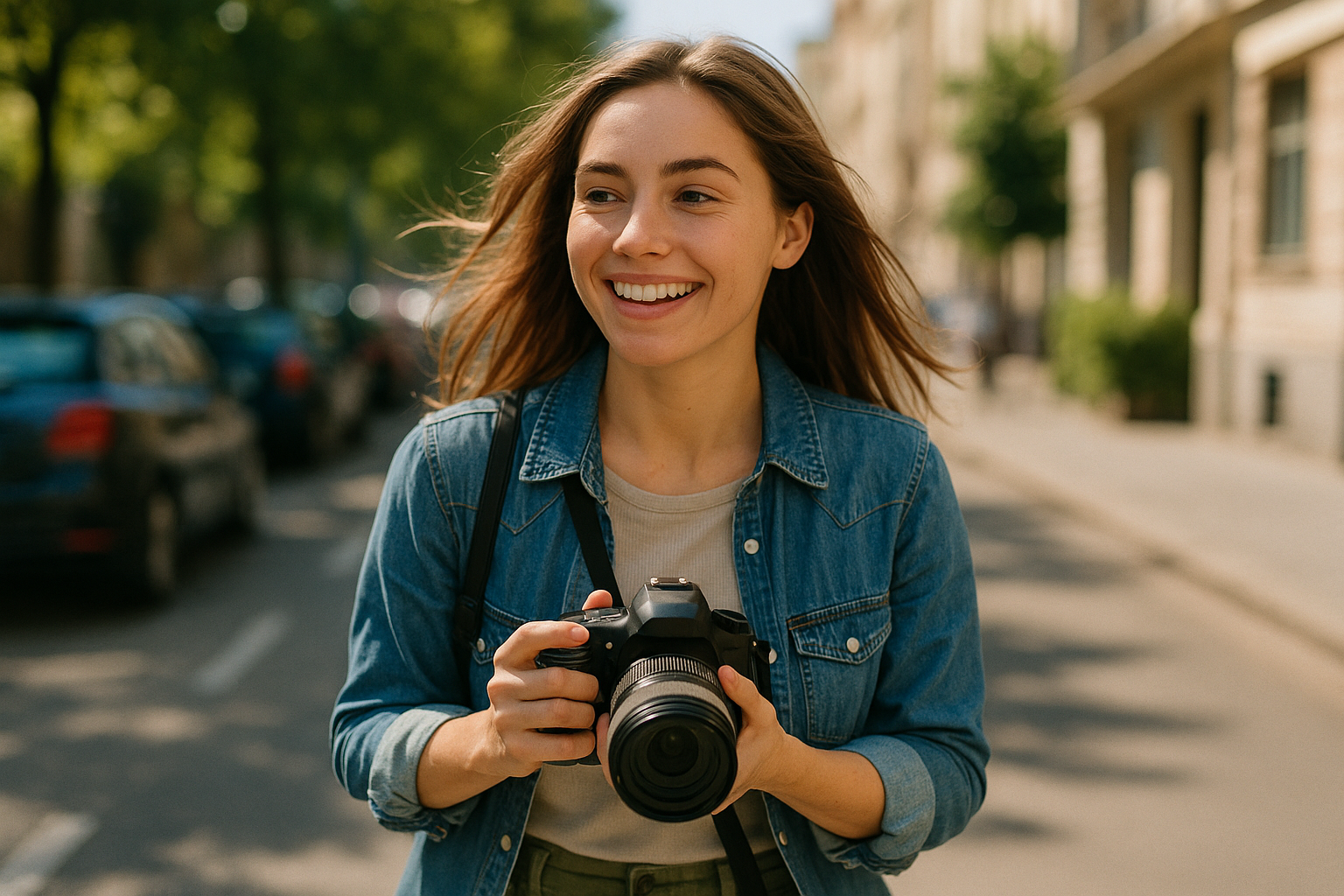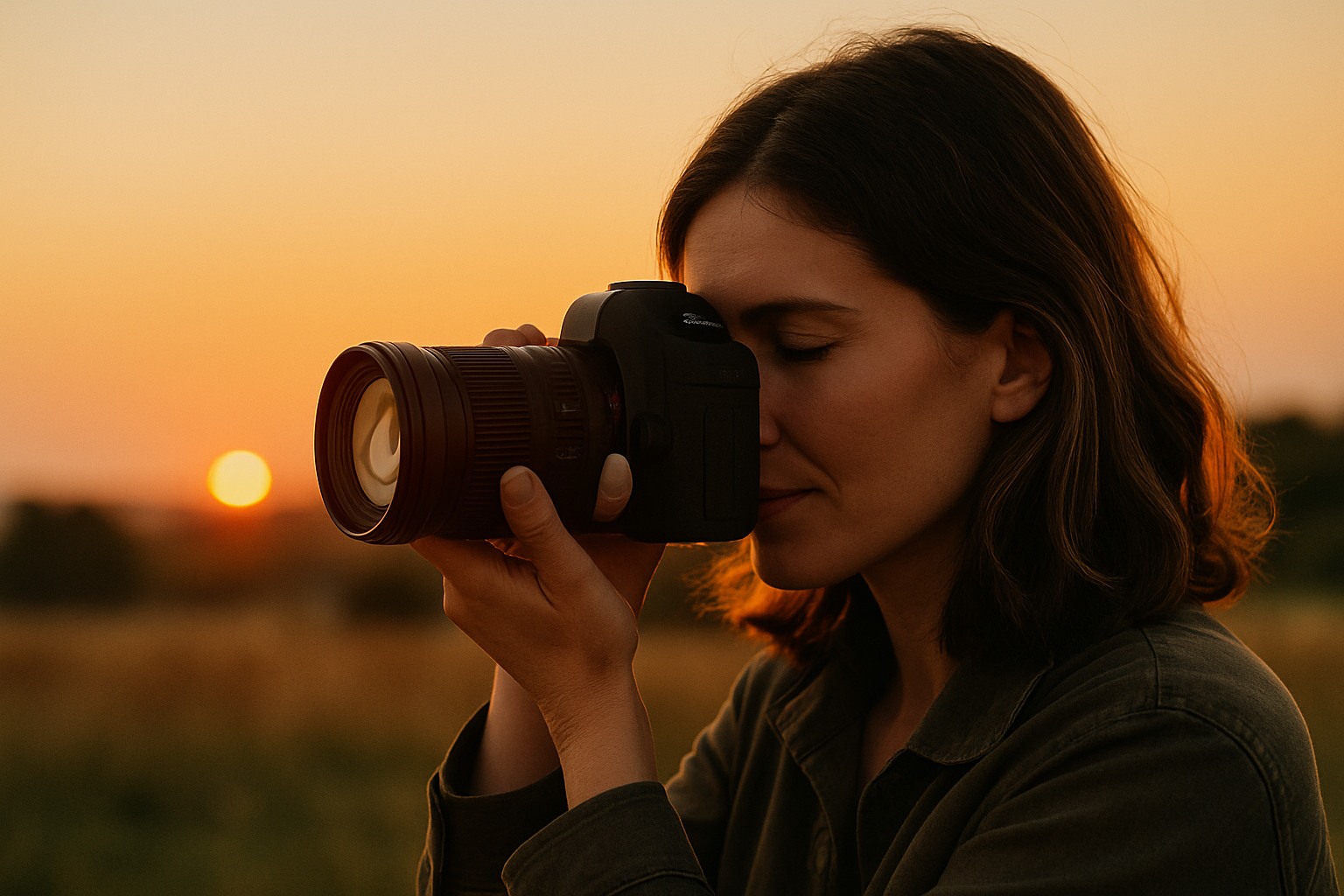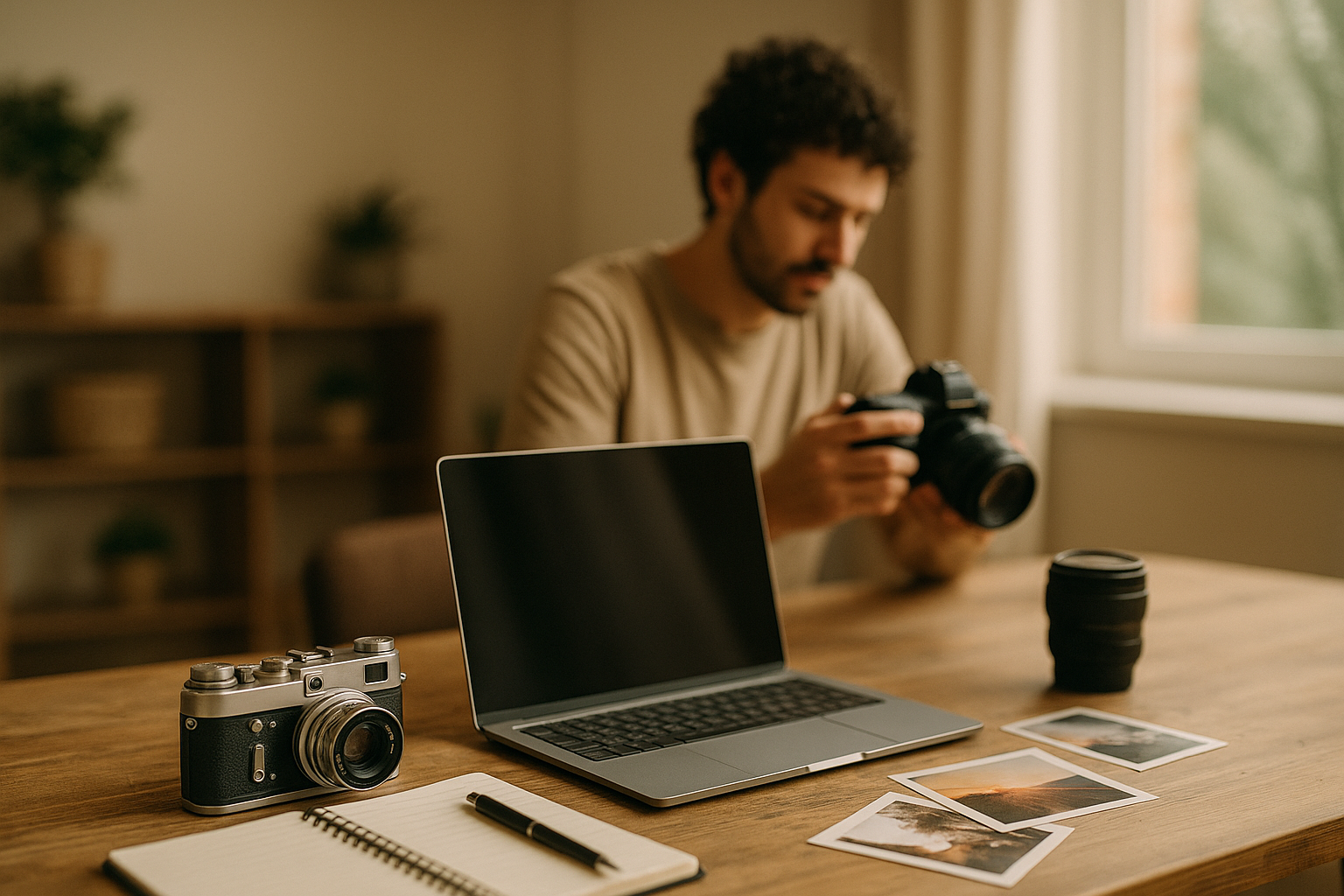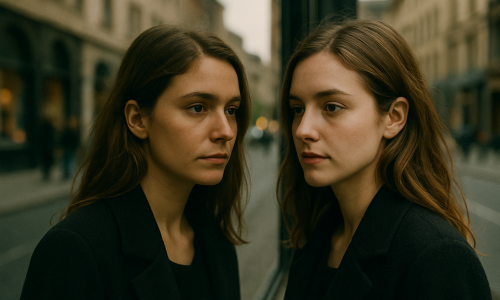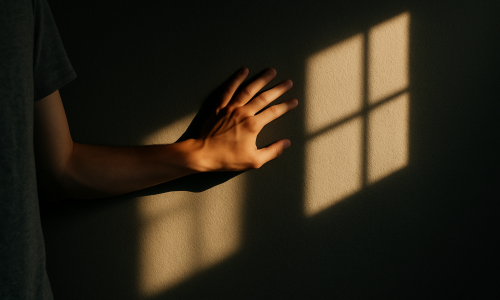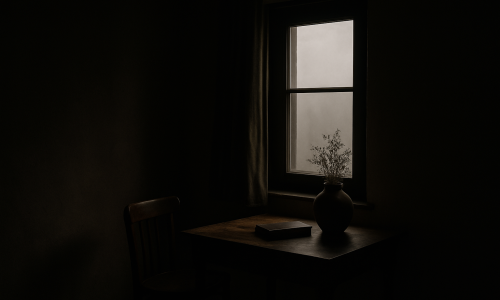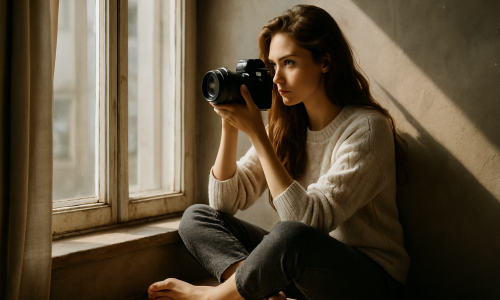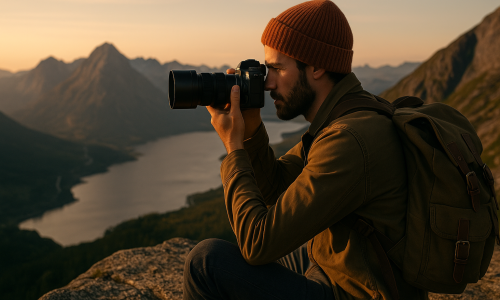Creating daily is one of the most powerful ways to develop your photographic eye, build creative discipline, and heighten sensitivity to light. When this process is done using only natural light and the comfort of your own home, the experience becomes even more intimate and revealing. A 30-day challenge, with one photo per day, is more than just a routine — it’s a deep perception exercise that can completely transform the way you see the everyday. It’s a mistake to think that shooting at home limits creativity. In truth, the home is filled with narrative potential. The light coming through the window, a reflection on the wall, the steam from your coffee, the shadow of a plant… all of it can become a powerful image when viewed with care. A project like this invites you to observe more, experiment freely, and discover beauty in simplicity. Why Start a 30-Day Photography Project? There are many benefits to committing to a continuous creative challenge, especially one limited to using natural light and your domestic environment. 1. Builds a creative habit Daily practice encourages consistency and helps overcome creative blocks. Photography becomes part of your daily rhythm. 2. Sharpens your eye for light Natural light changes constantly with the time of day and seasons. Observing it daily teaches you how to use it more expressively. 3. Helps you see beauty in the ordinary The challenge of photographing your home for 30 days forces you to see familiar things with new eyes. What once seemed invisible now becomes a focal point. 4. Creates a cohesive body of work By the end, you’ll have a complete visual narrative — a series with its own identity, voice, and photographic language. Getting Ready for the Challenge Before you begin, it helps to prepare both technically and creatively so you can stay consistent throughout the month. Choose your camera Use a DSLR, mirrorless, or even a smartphone — the key is to feel comfortable with your gear and be able to control exposure. Ideal lenses Editing Decide in advance if you’ll edit your photos or keep them raw. If editing, use a consistent style or preset to give the series visual unity. Project Structure: One Photo Per Day To support your creative flow and avoid burnout, here’s a suggested thematic structure for the 30 days. You can follow it exactly or adapt it to your own rhythm and intuition. Week 1 – Observing Light This week focuses on training your eye to notice light. Don’t worry about complex compositions yet — just feel how light behaves in your space. Week 2 – Exploring Texture and Form Here, you’ll start refining composition by noticing how light reveals surfaces, shapes, and depth. Week 3 – Narrative and Emotion This week challenges you to go beyond aesthetics and focus on storytelling and emotional connection. Week 4 – Synthesis and Personal Style The final week is a creative synthesis. By now, you’ll have a better sense of what you enjoy, how you see, and your personal visual identity. Tips for Staying Consistent When Home Becomes the Best Studio After 30 days, what you’ve created won’t just be a gallery of images — it will be a new way of seeing. By observing the light that enters your home day after day, you also open yourself to its presence. Photography becomes less about technique and more about lived experience. This project doesn’t require travel, models, or fancy locations. It invites you to take a personal journey through your own lens. Natural light becomes your creative partner. The daily repetition doesn’t lead to boredom — it reveals nuance. Each corner of your home begins to feel new again. And you realize that photography is everywhere — you just have to learn to see it.
Using Natural Reflections to Create Stunning Photographs
Reflections are one of the most accessible and fascinating tools for enriching a photograph with visual layers, texture, and meaning. When explored with intention and sensitivity, natural reflections become a powerful resource for creating surprising, often poetic and unexpected compositions. They can appear in puddles, windows, mirrors, cups, screens, or even metal surfaces — anything that interacts with light can become the foundation for a unique visual creation. Using natural reflections with purpose is an excellent way to train your photographic eye. It teaches you to look beyond the foreground, to include what is invisible at first glance, to play with perspective and symmetry. In this article, we’ll explore how to use natural reflections to turn everyday scenes into expressive works of art. The Power of Reflections in Photography Reflections are not just visual duplications. They serve as: Reflections don’t just mirror the world — they reveal feelings, atmospheres, and often dualities present in a moment. Where to Find Natural Reflections You don’t need elaborate settings to work with reflections. They’re everywhere in daily life. All it takes is a shift in angle, a pause to observe, and a willingness to let the light lead the way. Common sources of natural reflections: The secret is to notice how natural light interacts with these surfaces and what kind of image is revealed — often more interesting than the object itself. Creative Photography Projects Using Natural Reflections Below are practical, artistic ideas for using natural reflections to create engaging and expressive images. 1. Parallel Worlds in Puddles Rain puddles, especially right after a downpour, create visual portals. They reflect skies, buildings, people, and trees in poetic, distorted ways. How to explore: This kind of photography is ideal for creating surreal, layered narratives that feel almost magical. 2. Reflections in Windows: Inside and Out Windows act as transparent screens, blending the inside and outside worlds. When photographing reflections in windows, you can overlap realities and create images full of meaning. Step-by-step: This project is perfect for creating urban, nostalgic, or cinematic imagery. 3. Fragmented Self-Portraits with Reflections Capturing your own image in uneven or imperfect surfaces is a powerful way to take self-portraits beyond the literal. The goal isn’t to show your face clearly, but to play with fragmentation, distortion, and visual identity. Tips: This project is great for artistic self-exploration through abstract and creative framing. 4. Reflections in Transparent Surfaces Glasses, dishes, and other transparent objects offer unique opportunities for capturing subtle, often abstract reflections. How to do it: These photos work well in minimalist or moody photography series with a sensory, tactile quality. 5. Compositions with Double Meaning One of the most compelling aspects of reflections is the ability to tell two stories in a single image. By overlapping the reflected and real subject, you can create compositions full of symbolic or poetic meaning. Suggestions: This kind of project requires patience and pre-visualization, but the result is often powerful, layered, and emotionally evocative. Technical Tips for Working with Reflections Photographing natural reflections demands control over light, angle, and focus. Here are some recommendations: What Reflections Reveal About the Photographer’s Eye Photographing reflections is a practice of expanded vision. You’re not just photographing what’s in front of you — you’re capturing what whispers around it. You’re showing that reality isn’t singular, and that a photo can hold more than one viewpoint. As you train yourself to see reflections, you begin to notice the world with greater depth. What once seemed invisible becomes impossible to ignore. A dusty mirror, a rain-soaked street, a shop window — they all become creative opportunities. These projects also help you develop a photographic signature. After all, to reflect is also to interpret. And every photographer will see something different in the same surface. To create with reflections is to accept the light’s invitation to play, distort, overlay, and surprise. And once you start accepting that invitation, it becomes hard to see the world the same way again.
Turn Lack of Light into Art: Projects to Train Your Eye
When we think of photography, we often associate the act of capturing images with abundant light. It’s understandable — the very word “photography” comes from Greek and means “drawing with light.” However, it is precisely in low-light situations that our vision becomes sharper. Photographing with minimal light is not a limitation — it’s a creative lab. A space where perception, sensitivity, and composition take center stage. Developing photography projects in low-light conditions is one of the most effective ways to train your eye. Instead of relying on bright sources or expensive gear, you’re challenged to see beyond the obvious — to create using what’s available. And when that limitation meets natural light, the result can be surprisingly expressive. The Beauty in What’s Missing Contrary to what many believe, total darkness is not necessary for these kinds of projects. The key lies in scarcity: that soft beam of sunlight cutting through a gap, the subtle glow on a wall, or the gentle reflection of street light creeping into a room. These nuances are powerful invitations to create. A lack of light unveils hidden textures, enhances contours, and creates moods that wouldn’t be possible in fully lit environments. It invites you to slow down, to observe more carefully, and to compose with intention. Why Train Your Eye in Low-Light Environments? 1. Enhances Contrast Perception In darker scenes, the difference between lit and shadowed areas becomes more apparent. This teaches you how to highlight key elements in a composition and balance the visual weight in your frame. 2. Improves Scene Observation Low-light conditions require more patience. You must watch how light behaves — where it hits, how it spreads. This builds awareness and improves creative decision-making. 3. Creates Powerful Atmosphere Minimal light carries emotional weight. It can suggest solitude, stillness, intimacy. Learning how to work with such light is a great way to craft images with strong mood and storytelling. Creative Projects to Explore Natural Light Scarcity Below are several hands-on photography project ideas that will help you turn a lack of light into artistic expression — while developing a more refined and sensitive photographic eye. 1. Light Hunt: A Daily Micro Project Set aside 10 to 15 minutes each day to observe areas in your home (or another accessible space) where subtle natural light appears. It could be light peeking through a door crack, a curtain’s shadow on the wall, or a faint reflection. The exercise is to capture only one detail per day. How to do it: Over time, this project reveals hidden light patterns in your space and teaches you to see beauty where most would overlook it. 2. Self-Portraits in Low Light Nothing improves your eye more than becoming the subject yourself. Creating self-portraits in low-light settings allows you to experiment with limited natural light while learning about composition, expression, and light control. Step by step: This project builds emotional depth and aesthetic control. The results are often intimate, poetic, and visually striking. 3. Dramatic Still Life Scenes Use ordinary objects to build still life compositions in dark spaces. The key is to take advantage of side or overhead natural light to create dramatic shadows with simple items like fruit, flowers, or a teacup. Steps: This exercise trains your sense of balance, light direction, and negative space — and it’s an excellent entry point for learning about visual composition. 4. Shadows as Main Subject What if, instead of avoiding shadows, you made them the star? In dark settings, the shadows cast by natural light can become almost painterly. How to explore this: This project pushes your creative limits and teaches you to look at what’s “not there” — the invisible becoming visible through the light it blocks. 5. Low-Light Everyday Narratives Create a visual story about ordinary daily actions in low light: making coffee, journaling, making the bed, putting on shoes. Use only the available natural light and compose with intentional storytelling. Tips: This approach is excellent for developing timing and narrative through photography, while learning to find beauty in life’s small, quiet moments. Technical Notes to Support the Process Even without artificial lighting, you can optimize your images with thoughtful technical choices: When Light Speaks Louder in Silence Low-light projects aren’t just technical challenges — they’re sensory experiences. Photographing in these conditions is like whispering with your images, where each shaft of light carries meaning. Instead of illuminating everything, you choose what to reveal. The rest remains in mystery. And that’s often where true beauty lives. When you embrace this method of creation, you begin to trust your intuition. You learn to look slower. To notice what moves quietly. To understand that not everything needs to be fully seen to be deeply felt. You become more than just a photographer — you become a more sensitive observer of the world. Turning a lack of light into art is not a trick. It’s a mindset. It’s choosing to create even when the scene seems empty or uninspiring. And when you do that, you not only improve your technical skills — you shape a photographic identity that’s uniquely yours.
How to Create a Photo Series in Dark Environments Using Only Natural Light
Creating under limitations can be one of the most powerful ways to push creativity forward. In photography, dark environments are often viewed as obstacles—especially for those who want to work exclusively with natural light. But it’s precisely in these challenging settings that magic can happen. Low light doesn’t mean a lack of beauty; on the contrary, it opens doors to mysterious compositions, emotionally charged atmospheres, and results that evoke deep, intimate sensations. In this article, you’ll learn how to turn low-light spaces into the perfect setting for developing a consistent, engaging, and expressive photo series—using nothing but the natural light available. Why Photograph in Dark Environments? Low-light environments sharpen the photographer’s eye. With less visual information available, compositions become more minimalist, contrasts stand out more clearly, and light becomes a true storytelling tool. This kind of photography favors drama, emotion, and sensitivity. Moreover, developing a series in low-light conditions is an opportunity to explore the technical capabilities of your camera, observe subtle details more attentively, and above all, exercise intentional creativity. What Is a Photo Series? Before we dive into technique, it’s essential to understand what a photo series is. A series is a group of images that share a visual, thematic, or narrative unity. In other words, they’re not isolated photos—but photographs that speak to one another, forming a cohesive body of work. By choosing to build a series in dark environments, you’re diving into a specific visual world and establishing a unique photographic language—whether through lighting, color palette, composition, or subject matter. Choosing the Right Environment Not all dark environments are the same. Some offer small streams of natural light from windows, door gaps, or skylights. Others rely on reflections, light-colored surfaces, or ambient light from adjoining rooms. Your choice of space will directly affect the tone and direction of your series. What to Look for: Spaces like dimly lit hallways, bedrooms with thick curtains, bathrooms with small windows, or rustic kitchens can become deeply expressive scenes when observed with the right intention. Training the Eye: What to Observe Before Shooting Light in dark spaces is precious. Before you start shooting, take time to simply observe how it behaves in the room: A useful practice is to spend a few minutes in stillness, just observing. That moment of silence often reveals details that would otherwise go unnoticed in the rush to shoot. Recommended Gear and Settings Although we’re working exclusively with natural light, making a few smart technical choices can drastically improve your results. Ideal Equipment: Suggested Settings: Developing a Visual Narrative A series is more than just a collection of aesthetically pleasing photos. It should communicate something. Think about what emotion or atmosphere you want to evoke—quietness, introspection, solitude, warmth, mystery? Then begin to build your visual story around that intention. Tips for Visual Cohesion: Step-by-Step: Building Your Series 1. Planning Choose a theme and define how many images you want to create (ideally between 5 and 15). Think about how each image will complement the others to form a narrative. 2. Choosing Your Locations Explore your home or nearby spaces. Study how natural light behaves at different times of day. Take notes on which locations have the most potential. 3. Staging and Adjustments Organize the space subtly—without removing its essence. Rearrange furniture, open or close curtains, add or remove decorative elements that support your concept. 4. Shooting Session Set up your tripod, fine-tune your camera settings, and shoot calmly. Take multiple angles of the same scene, experiment with depth of field, and watch how shadows evolve. 5. Selection and Editing Curate the photos that best complement one another. Edit with a light touch—enhance shadows, adjust color temperature, but preserve the natural quality of the light. Creative Techniques to Enrich the Series Turning Darkness Into Visual Poetry Photographing in dark spaces with only natural light invites you to become a visual poet. You’re no longer fighting the darkness—you’re embracing it as part of your language. Darkness becomes a character, a storyteller, an atmosphere builder. Through this lens, images become quiet, emotional, and layered with meaning. Your focus sharpens toward the essential—the small light, the subtle form, the barely-there texture. This is where your unique photographic voice begins to emerge. Whatever your theme, remember: the power of a series lies in its intention. Each image should echo the previous one and prepare the way for the next. It’s through this visual dialogue that you go beyond technique—you build expression, authorship, identity.
5 Creative Project Ideas Using Only Window Light
Natural light streaming through a window has an almost magical quality. It transforms spaces, reveals textures, and creates moods that artificial lighting rarely matches. For photographers who love a soft, realistic, and emotionally resonant aesthetic, exploring window light offers a rich creative opportunity. In this article, you’ll discover five creative photography project ideas that rely solely on window light — all approached with depth, technique, and artistic sensitivity. Why Use Window Light? Window light is one of the most accessible and versatile sources of illumination for photographers seeking atmosphere and authenticity. It shifts throughout the day, changing with the weather and seasons, offering an array of expressive possibilities. A soft light filtered by curtains or blinds often provides a more aesthetically pleasing alternative to flashes or continuous lighting. Working with natural window light encourages you to develop a keener eye for space, composition, and light direction. Each ray that enters through a gap holds artistic potential. Let’s explore how to make the most of this light source through five inspiring projects. 1. Intimate Portraits with Side Lighting Few things enhance a face more beautifully than diffused side lighting. Place your subject near a window, preferably during the soft light hours of early morning or late afternoon. This setup produces natural shadows and contrast that gracefully highlight facial features. How to do it: This setup also works well for self-portraits. With a tripod and a timer, you can create deeply personal images that communicate emotion through body language and the dance between light and shadow. 2. Shadow and Silhouette Studies Direct sunlight pouring through a window creates striking shadows — perfect for abstract or minimalist compositions. Studying these shapes is a powerful creative exercise that can yield surprisingly expressive results. Execution tips: To take it a step further, use human elements like hands or profiles to play with silhouettes. This technique adds a poetic, emotional dimension to your visual storytelling. 3. Poetic Still Life Compositions Creating still life scenes under window light is a great way to study composition, light, and color harmony. These projects help refine your eye and give you the opportunity to produce image series that are emotionally and visually compelling. Steps to try: Photograph the same setup at different times of day to see how the light transforms the scene. This is a powerful way to train your sensitivity to subtle shifts in natural lighting. 4. Detailed Macro Textures with Natural Light Soft window light is ideal for macro photography, especially when highlighting textures and fine details. Whether you’re photographing the surface of a leaf, the texture of skin, or the interior of a flower, this light helps those tiny elements come alive. How to shoot: This project is also great for capturing everyday objects — feathers, fabric, food, even soap bubbles. The key is to observe closely and let the light do the storytelling. 5. Everyday Life with Visual Narratives One of the greatest strengths of natural window light is its ability to tell authentic stories. Capturing daily moments — a child playing on the floor, someone reading by the window, coffee being poured — can produce emotionally resonant images with strong narrative power. How to approach it: This project encourages the photographer to slow down, observe, and connect with their surroundings. The result is not just beautiful imagery, but a reflection of real life through a poetic lens. Let Light Lead the Way Using window light invites you to deepen your photographic vision. As you begin to see how it shapes faces, spaces, and everyday objects, photography takes on new meaning. The five projects shared here don’t require complex gear or elaborate setups — they ask only for attention, curiosity, and a willingness to create with what you already have. The beauty of natural light lies in its simplicity and unpredictability. A single sunbeam shifting position, a passing cloud, a gently moving curtain — each moment can change a photo entirely. Embrace these changes. Observe, experiment, and shoot. That’s where the magic happens. Each of these projects can be repeated and reinterpreted endlessly. The more you practice, the more refined your eye becomes. Window light becomes your creative partner — your tool, your muse, and your everyday source of inspiration. So now that you have these ideas, why not pick up your camera and begin experimenting with the light that’s pouring into your own space? Photography happens wherever the light lands — and it might be glowing right now through your window.
Travel and Shoot: The Nomadic Lifestyle for Creatives and Adventurers
Living with geographic freedom, exploring new places, connecting with different cultures, and turning all of that into powerful images — this is the essence of the nomadic lifestyle embraced by photographers and visual creatives. It’s a model that continues to gain followers around the world: people who’ve traded the traditional routine for a life of purpose, creativity, and discovery. In this article, we explore how photography has become a gateway to modern nomadism, the possible paths within this lifestyle, the challenges, and the opportunities that come with turning the world into both a workspace and a source of inspiration — all through the eyes of a photographer. What Does It Mean to Be a Digital Nomad Today? A digital nomad is someone who works remotely and can live while traveling, free from a fixed address. For photographers and visual artists, this freedom takes on even more meaning. Each new destination becomes a source of income, inspiration, and visual storytelling. It’s a lifestyle that merges work with passion. With a camera in your bag and an open mind, the world becomes both home and canvas. Why Photography Aligns Perfectly with a Nomadic Lifestyle Photography is inherently an act of observation and movement. When paired with a life on the road, it provides fertile ground for authentic and powerful visual narratives. Here’s why this combination is so compelling: 1. Constantly New Landscapes Every destination offers new scenery, people, colors, and textures — a constant refresh for creativity and an antidote to visual stagnation. 2. Cultural Encounters and Human Stories Documentary photography thrives on cultural exchange. Capturing faces, traditions, and daily life in different regions deepens the photographer’s perspective and emotional connection. 3. Changing Light and Environmental Conditions Working in diverse environments with different lighting, weather, and scenery sharpens technical skill and results in unique photographic opportunities. 4. Endless Content Creation Beyond building a personal or artistic portfolio, photographs can be monetized through stock agencies, travel blogs, social media content, print publications, and brand collaborations. How to Start a Photography-Fueled Nomadic Life Becoming a nomadic photographer requires planning, flexibility, and strategic thinking. Here’s a step-by-step guide to begin your journey with confidence: 1. Define Your Purpose Ask yourself what you want to achieve with this lifestyle. Do you want to make a living from photography? Launch a personal project? Create content for brands or tourism boards? This clarity will guide your direction. 2. Build a Compact and Reliable Photo Kit Less is more. Invest in quality, not quantity. A solid camera body, two versatile lenses (wide-angle and telephoto), spare batteries, memory cards, and a weather-resistant bag can take you far without weighing you down. 3. Choose Strategic Destinations Start with locations that offer a supportive infrastructure for digital nomads — strong internet, safe environments, and affordable lodging. Also, select places that align with your photographic style: nature, street, portraiture, architecture, or culture. 4. Establish a Work Routine on the Road Freedom doesn’t mean chaos. Set time aside daily to shoot, edit, back up files, and manage your professional presence online (website, blog, Instagram, portfolio, etc.). 5. Build a Global Network Connect with other photographers, creatives, brands, and potential clients. Participate in online communities, events, and collaborations that can open doors wherever you go. Ways to Make Money as a Nomadic Photographer Living as a nomadic creative is financially viable with strategy and income diversification. Here are some ways to generate revenue while traveling: Challenges of the Nomadic Photographer’s Lifestyle It’s not always postcard-perfect. Knowing the potential challenges will help you avoid romanticizing the lifestyle too much: 1. Unstable Connectivity and Resources Some places may lack strong Wi-Fi or editing resources. Having offline workflows and physical backups can help mitigate this issue. 2. Solitude and Constant Adaptation Frequent solo travel can be isolating. Constantly switching environments also demands emotional resilience and logistical flexibility. 3. Equipment Security Cameras and lenses are expensive and attract attention. Invest in insurance, secure bags, and always stay alert in unfamiliar locations. 4. Finding a Healthy Work-Life Balance When travel becomes work, it’s easy to burn out. Set aside time to experience places without a camera in hand — to feel, not just capture. Tips for Intentional Travel Photography When Freedom Becomes a Creative Path Traveling and photographing isn’t just a lifestyle — it’s a philosophy. It’s about seeking freedom without losing depth. It’s turning the world into a classroom and a canvas at once. Each place not only adds to your portfolio, but expands your perspective, visual language, and emotional intelligence. Whether you’re a professional or an enthusiast, if you’re dreaming of a camera-in-hand life on the road, nomadic creativity is absolutely within reach. It demands commitment, but the rewards — artistic, personal, and experiential — are immeasurable. The road teaches, light guides, and photography immortalizes. In that cycle, many creatives are finding not just work, but meaning.
How Photography Can Help Reduce Stress and Improve Your Quality of Life
We live in an era defined by rush, information overload, and constant stimulation. In the midst of so many commitments and pressures, finding moments to breathe has become a necessity — no longer a luxury. In this context, photography emerges as a powerful ally to relieve stress and promote well-being. More than artistic expression or a hobby, photography can become a therapeutic and transformative practice. By paying closer attention to our surroundings, seeking new angles, and capturing the subtle beauties of daily life, we cultivate presence, focus, and calm — three essential elements for a lighter and more balanced life. Why Can Photography Be Therapeutic? Photography doesn’t require words, answers, or judgment. It’s a silent language in which the simple act of observing and capturing already promotes inner change. The practice invites us to be more aware of the present, to value the details, and to slow down — key attitudes for reducing stress. 1. It promotes focus on the present Photography requires full attention. To capture a meaningful image, you must be fully present — noticing light, color, shapes, and emotions. This focus on the now helps silence excessive thoughts and ease anxiety. 2. It gives voice to emotional expression We can’t always verbalize how we feel. Through photography, we can channel our emotions visually. When we photograph, we externalize feelings and find a safe way to process what we’re experiencing internally. 3. It creates space for a mental pause Taking a few minutes to notice and photograph something beautiful or interesting is like pressing a reset button in the brain. This pause helps regulate mood, organize thoughts, and brings instant relief. 4. It strengthens self-esteem and self-reflection Seeing the world through your own lens provides a unique perspective. Looking back at your photos allows you to observe patterns, emotional shifts, and internal growth over time. It encourages self-awareness and reinforces your sense of individuality. Photography as a Stress-Relief Tool: How It Works Practicing photography regularly can be compared to active meditation. It interrupts negative thought cycles and redirects your attention to something lighter, more creative, and constructive. Here’s how it works in real life: 1. Sensory engagement Photography activates multiple senses: sight, touch when holding the camera, and hearing as you listen to your surroundings. This multisensory focus shifts attention away from stress and anchors you in the present. 2. Slower rhythm Mindful photography doesn’t go hand-in-hand with haste. When you aim to observe and shoot intentionally, you naturally slow your pace — both mentally and physically. And that simple shift is already powerful for stress control. 3. Creative satisfaction Creating something — even visually — stimulates brain regions associated with pleasure and motivation. It triggers dopamine release, a neurotransmitter closely linked to feelings of happiness and fulfillment. Step-by-Step Guide: Using Photography as a Stress-Relief Practice You don’t need to be a professional photographer or own expensive gear. All it takes is a curious eye, a smartphone or basic camera, and a willingness to connect with the moment. 1. Choose a calm moment in your day This could be in the morning, during a lunch break, or in the early evening. Reserve 10–15 minutes to observe your surroundings and photograph whatever catches your attention. 2. Start with simple themes Light and shadow, textures, reflections, geometric shapes, plants, or everyday objects — anything can become interesting when viewed with intention. Don’t worry about the result; focus on the process. 3. Avoid distractions Put your phone on airplane mode, turn off notifications, and be fully present. This is your moment of mental rest and deserves your full attention. 4. Create a personal wellness album Save the photos that moved you most into a special folder — perhaps called “my calm moments.” On tough days, looking through these images can help you restore emotional balance. 5. Explore nature when possible Studies show that being in nature reduces stress. Photographing trees, plants, skies, rivers, or landscapes enhances this effect and strengthens the sense of peace. Other Emotional and Mental Benefits of Photography In addition to stress relief, regular photography practice brings positive impacts to other areas of your life: Tips for Making Photography a Stress-Relief Habit When Clicking Becomes a Form of Self-Care Photography won’t fix everything, but it can be a bridge to self-care. In an anxious and fast-paced world, learning to slow down and see the world more gently is a form of healing. The click that starts as a simple gesture can grow into personal transformation. When you photograph, you’re not just creating images — you’re creating pauses, processing emotions, and recording moments that might otherwise be forgotten. In the end, maybe it’s not even about the image itself, but about what it made you feel the moment you decided to capture it. Bring this practice into your routine with ease and no pressure. Start with just a few minutes a day and you’ll soon notice the deep emotional impact it can have. Looking back, you may realize that photography helped you be more fully present — and that alone is a gift worth cherishing.
How to Integrate Photography into Your Daily Life and Make It Lighter
You don’t always need to travel to breathtaking landscapes or have professional equipment to feel the impact of photography in your life. Photography can (and should) be an accessible, everyday practice — and above all, a transformative one. When used consciously, photography has the power to make our days lighter, our eyes more sensitive, and our moments more meaningful. Integrating photography into daily life is an invitation to notice what usually goes unnoticed, to pause for a few seconds, take a deep breath, and find beauty even in the chaos. In doing so, we not only capture memories, but also cultivate a more mindful, creative, and present lifestyle. Why Bring Photography into Your Routine? Before anything else, it’s worth reflecting: why photograph every day? What can this change in your practical, emotional, and even mental life? 1. Reinforces the habit of presence Photography requires observation. To compose an image, you must be aware of the light, the environment, the colors, the shapes — and even what’s outside the frame. This level of attention pulls us out of autopilot and invites us to be more present, even in routine activities. 2. Helps slow you down When you reach for your phone or camera to capture something, you naturally slow your pace. This simple act works as a mindful pause during your day, a small moment of calm that relieves stress and refreshes the mind. 3. Boosts creativity Incorporating photography into your routine challenges you to see the same setting in different ways. Creativity grows as you explore new angles, new stories, and new interpretations of everyday life. 4. Creates an emotional visual diary Photography lets you document not just what you see, but also what you feel. A sunset after a tough day, a cup of tea on a quiet morning, or a loved one’s smile — these are emotional portraits that connect us to our personal journey. How to Start Photographing in Your Daily Life Bringing photography into your daily life doesn’t require big changes — just intention. Here are some practical and realistic ways to get started: 1. Start with what you have You don’t need to invest in expensive gear. Your smartphone is a powerful tool and more than enough to capture unique moments. What matters most is your perspective, not your equipment. 2. Develop a “photographic eye” Try to observe the world as if you were always composing an image. Notice shadows on the wall, reflections in windows, patterns on sidewalks. Life is full of hidden scenes waiting for a watchful eye. 3. Set aside 5 minutes a day Dedicate just a few minutes daily to photograph something that represents that moment. It could be your breakfast, your workspace, a plant, the sky, or even your own reflection. Consistency strengthens the habit. 4. Create themes or personal challenges Choose a color each week to photograph, or capture objects with emotional value. These mini-projects make the practice fun and give purpose to your photos. 5. Use photography as meditation When you photograph mindfully, you connect with the present. Take a deep breath before clicking. Observe the details. Notice how you feel in that moment. Photography becomes a meditative practice when done with awareness. Tips to Make the Habit Sustainable Creating a new habit requires consistency and, above all, joy in the process. Here’s how to make it easier and more natural: 1. Don’t strive for perfection Your photos don’t need to be award-winning. Sometimes they won’t have perfect light or composition — and that’s okay. The goal is to express, feel, and record — not compete. 2. Share with purpose (or not at all) You can create a private album, a dedicated Instagram profile, or even print your photos in a journal. But remember: you don’t have to post everything. Photograph for yourself, first and foremost. 3. Tune in to your emotions Notice how you feel before, during, and after photographing. Often, this simple practice can shift your entire emotional state, bringing peace and clarity. 4. Involve other people Invite friends or family to participate. They can be the subjects of your photos, or companions on photo walks. Sharing your vision with others strengthens bonds and can lead to meaningful conversations. Everyday Moments Worth Photographing Not sure where to start? Here are a few inspiring ideas of daily life situations that can make for beautiful photos: These images don’t need captions or context. They work as tiny capsules of emotion, beauty, and time. When Routine Becomes Art The true magic of integrating photography into your daily life lies in transforming the ordinary into something extraordinary. As we begin to pay closer attention, we realize there is poetry in the small things: the light beam crossing the living room, a distracted gaze, the silent details that once went unnoticed. This practice reconnects us with simplicity. In a world that pushes us to produce, rush, and perform, stopping to observe and photograph is almost an act of resistance. A reminder that life is happening now — and that now deserves to be seen with care. Lightness doesn’t come from perfect days but from seeing beauty in everyday ones. Photography, when done with intention and presence, is one of the most honest and accessible ways to live with more awareness, gratitude, and calm.
Mindful Photography: The Art of Living the Moment Through the Lens
The fast pace of everyday life, with its constant notifications, deadlines, and obligations, often distances us from what is right in front of us. In this context, practices that promote presence and full awareness become increasingly relevant — and photography can be one of those tools. More than just capturing images, it can be an exercise in mindfulness: the practice of mindful photography. This approach proposes a deeper connection between the photographer, the environment, and the present moment. It’s not just about technique or aesthetics — it’s about seeing with your heart and feeling before clicking. It’s about finding beauty in the ordinary, noticing details invisible to the hurried eye, and transforming the act of photographing into a meditative experience. What is Mindful Photography? Mindful photography is a practice that combines the principles of mindfulness with the art of taking pictures. It means observing with curiosity, without judgment, being fully present in the visual and emotional experience of the moment. The camera is no longer just a technical tool, but a means of reconnecting with the now. In this approach, there is no rush to get the “perfect photo.” The goal is to be immersed in the scene, in what you see, feel, and perceive. The shutter click happens as a consequence of the connection that’s been built — not the search for likes or visual perfection. Benefits of Photographing with Awareness The practice of mindful photography offers a series of benefits that go far beyond the quality of the images themselves: Stress Reduction By slowing down and focusing attention on the present moment, mindful photography works as a form of active meditation. This helps reduce stress, lower anxiety, and promote mental relaxation. Boost in Creativity Being fully aware of your surroundings and open to new perceptions naturally stimulates creativity. You begin to notice natural compositions, the play of light and shadow, spontaneous expressions, and subtle details that would normally go unnoticed. Connection with the Environment This practice helps develop a more sensitive eye for nature, people, and everyday scenes. It’s as if you start to see the world with fresh eyes — more attentive, more grateful, more open. Development of Patience Mindful photography doesn’t rush. By waiting for the right light, the natural expression, or the perfect spontaneous moment, we cultivate patience — a rare virtue in today’s world. How to Practice Mindful Photography You don’t need to be a professional photographer to begin. Anyone with a phone or a simple camera can adopt this approach. Here’s a step-by-step guide to help you get started: 1. Slow Down First Before picking up your camera, pause. Take a few deep breaths. Observe the environment around you without urgency. Listen to the sounds, take in the colors and textures. Allow yourself to fully be there before capturing anything. 2. Observe Without Judgment Avoid looking at scenes with expectations or aesthetic judgments. Instead of seeking something “beautiful,” look for what is real. Sometimes, a detail no one notices can become a powerful image when observed with intention. 3. Use All Your Senses Beyond sight, pay attention to the sounds, smells, temperature, and even the feelings the moment evokes. This helps create more meaningful and emotionally rich photographs. 4. Photograph Less, Observe More Unlike traditional photography, which often encourages rapid shooting to later select the best images, mindful photography promotes the opposite: fewer shots and deeper observation. Presence comes before the shutter. 5. Don’t Worry About the Outcome Forget about composition rules, filters, likes, or feedback — just for a moment. Take photos for yourself, as a way to mark your presence in the world. The visual result is simply a reflection of your inner state. 6. Reflect on Your Photos Poetically After photographing, look through your images slowly and thoughtfully. Reflect on what they mean to you. What were you feeling at the time? Is there a story behind that image? What emotions or memories does it bring back? Where to Practice Mindful Photography You can practice this anywhere. There’s no need to travel to exotic locations or wait for special events. Beauty exists in everyday life — you just need to be present enough to see it. In Your Own Garden Watch the dew on leaves, insects in motion, the shifting light at sunset. A garden is a perfect lab for observing tiny miracles and sensations. During Urban Walks Cracks in the wall, reflections in puddles, spontaneous human scenes — all can be beautiful under a mindful gaze. Cities are full of stories waiting to be seen slowly. While Traveling Instead of rushing to see everything, slow down. Choose fewer places and dive deeper into each experience. Observe locals, textures, architecture, light — with presence and openness. In Simple Moments A coffee on the porch, a loved one’s smile, the silence of early morning — any of these can become powerful photographs when captured with presence. Practical Tips to Build the Habit When Photography Changes Your Perspective Mindful photography doesn’t require expensive gear, exotic settings, or advanced skills. All it asks is your presence. By photographing with awareness, you turn the ordinary into the extraordinary and uncover beauty in what was once overlooked. This practice doesn’t just change how you see the world — it changes how you exist in it. Each image becomes a mirror of a lived moment, not just a static capture. It’s as if photography becomes less about clicking and more about embracing the now through your lens. The art of living the moment through photography is, above all, an invitation: breathe, observe, and feel. The world is happening now — and it’s waiting to be truly seen.
Creative Routine: 7 Daily Habits to Sharpen Your Photographic Eye
Photography goes far beyond pressing a shutter button. It’s a way of seeing the world with more attention, sensitivity, and curiosity. Many beginner photographers believe that photography starts and ends with technique and equipment, but the real difference lies in how you perceive everyday life. Stimulating your photographic eye on a daily basis is what separates ordinary snapshots from truly remarkable images. And for that, developing a creative routine makes all the difference. In this article, you’ll discover 7 practical and accessible habits to train your visual perception, sharpen your creativity, and turn ordinary moments into photographic art. 1. Observe Carefully Before You Shoot One of the most common mistakes among beginners is pulling out the camera and clicking without thinking. The habit of observing first — light, shapes, colors, movement — trains your brain to seek more interesting compositions. Before taking any shots, try the “contemplative look” technique. Choose any place — your balcony, a park bench, or even your kitchen — and quietly observe for a few minutes. Notice how the light falls, which objects stand out, what’s moving, what remains still. Doing this for 5 to 10 minutes a day can completely change your awareness of visual details. 2. Carry a Camera (or Your Phone) Everywhere Photographic opportunities arise all the time — and they rarely give a warning. Carrying a camera or using your smartphone as an extension of your eye is essential for developing the habit of capturing spontaneous moments. Daily photography is one of the best schools of creativity out there. A reflection in a car mirror, the shadow of a tree on the sidewalk, the texture of an old wall… All of this can become art if you’re paying attention. Making this a daily habit will greatly expand your visual repertoire. 3. Set Small Daily Creative Challenges Nothing stimulates the mind more than stepping out of autopilot mode. Giving yourself small photography challenges is an excellent way to train your eye. They can be simple and fun, like: You can write these challenges in a notebook or make a little idea jar. The important thing is to break away from routine and explore new perspectives. 4. Practice Seeing Photos Without Shooting Being a photographer also means being able to “see photographs” even when the camera stays in your bag. As you walk down the street, imagine which scenes would make great photos. Frame them mentally: what would the crop be like? Where would the focus go? Where is the most interesting light? This visualization exercise sharpens perception and helps you identify composition patterns and decisive moments more easily. The more you practice this, the more your brain becomes a visual radar — even on days when you’re not actively shooting. 5. Build Your Personal Visual Reference Library Inspiration fuels creativity. Frequent exposure to other photographers’ work encourages new ideas and ways of seeing the world. But more important than seeing tons of images is building a personal visual library: a collection of references that resonate with your style, feelings, and aspirations. Set aside a few minutes each day to explore photographer profiles on Instagram, sites like Behance, Pinterest, or photography books. Save the images that move you — even if you can’t explain why. Over time, you’ll notice visual patterns and start to develop your own photographic identity. 6. Keep a Photo Journal Creating the habit of visually documenting your daily life is one of the most effective ways to train your eye. Whether it’s random shots on your phone, a Google Drive folder, or a private Instagram account — the important thing is to commit to capturing something every day. This photo journal becomes your personal lab, where you can test angles, lighting, themes, and techniques with no pressure. Reviewing this material often will help you notice your progress, identify recurring mistakes, and refine the style you’re building. 7. Make Time for Creative Downtime As contradictory as it may seem, taking intentional breaks and allowing time for rest is essential for maintaining creativity. The mind needs breathing room to connect ideas, digest references, and form new possibilities. Take time during the day to walk without purpose, enjoy a quiet cup of coffee while watching the world go by, or simply listen to music while gazing at the sky. These moments of “creative idleness” are fertile ground for visual insights that can later become powerful photos. When Your Vision Shifts, Everything Changes Incorporating creative habits into your daily routine doesn’t require expensive gear or exotic destinations. The secret lies in transforming the ordinary into the extraordinary — in training your eye to see the world with curiosity and sensitivity. Photography is a language. And like any language, the more you practice, the more fluent you become. Small daily actions can cultivate a sharper, more personal and impactful photographic eye. With consistency, these habits take root and shape not only how you photograph, but how you see life itself. Now it’s your turn: try one habit per week and notice the transformation in your photographic work. Your eyes — and your art — will thank you.

